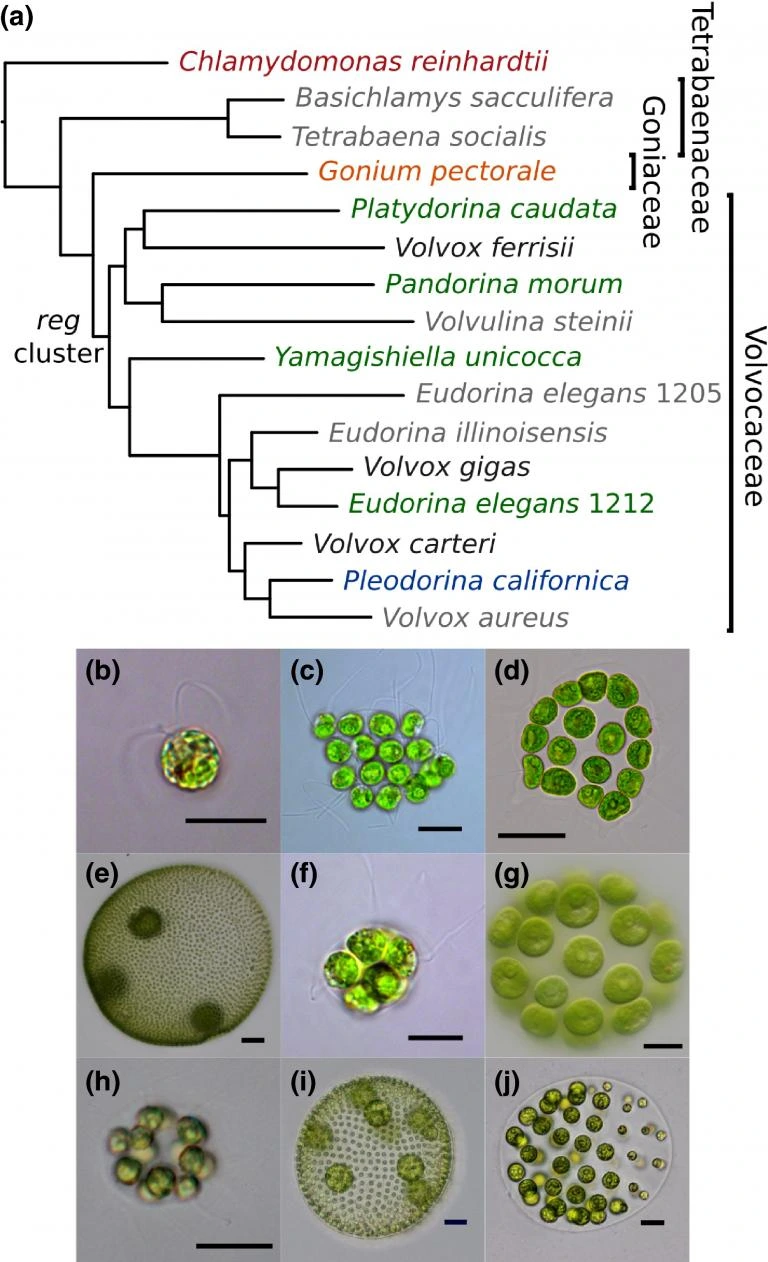The evolution of germ-soma differentiation is a critical component of the evolutionary transition in individuality from unicellularity to multicellularity. Somatic cells lose their reproductive capacity and germ cells have a decreased ability to survive independently. Thus, germ and somatic cells must operate in concert to survive and produce the next generation. In Volvox carteri, the development of somatic cells is controlled by regA, a transcription factor that regulates chloroplast biogenesis. regA is a member of the VARL gene family and part of a tandem duplication of four to five genes known as the regA gene cluster. Our lab identified when regA and the regA gene cluster evolved in the Volvocine green algae and showed that it is present in species with and without obligate somatic cells (Hanschen et al. 2014; Grochau-Wright et al. 2017). Future research will focus on the function of regA in species that lack obligate somatic cells.

Grochau-Wright et al. 2017
Species phylogeny and images of volvocine algae species from Grochau-Wright et al. (2017). (a) Bayesian species tree, consistent with previously published species trees. Species without somatic cells or the reg cluster are shown in red and orange. Species without obligate somatic cells and with the reg cluster and shown in green. Soma-differentiated species are shown in blue, and germ-soma differentiated species are shown in black. Species in gray were not included in the analysis. The inferred origin of the reg cluster is denoted. (b) Chlamydomonas reinhardtii; (c) Gonium pectorale; (d) Platydorina caudata; (e) Volvox ferrisii; (f) Pandorina morum; (g) Yamagishiella unicocca; (h) Eudorina elegans UTEX 1212; (i) Volvox carteri f. nagariensis; (j) Pleodorina californica.
